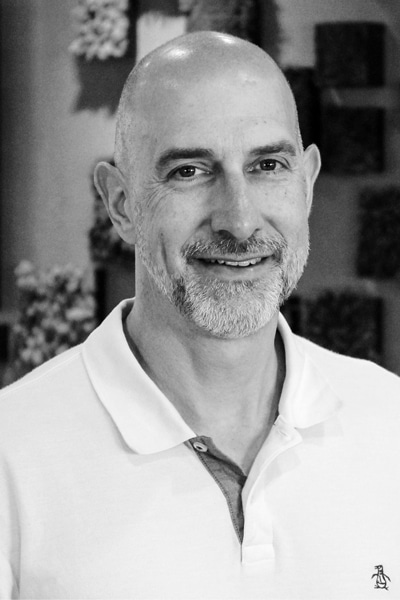
The number of cars on earth is projected to double by 2040, when 70 percent of the world’s population is expected to live in cities. If that concerns you—and it should—take heart: cars, trucks, and buses (and drones) are finding new ways of getting around that might avert visions of traffic hell, and they’re getting help in this area from HERE Technologies.
David Kenzer, senior vice president, general counsel, and corporate secretary for the company, is enthusiastic about the possibilities that its technology provides. HERE has had digitized maps and worked on in-car navigation systems since 1985, and it now offers a platform for real-time data and three-dimensional mapping that serves vehicles, pedestrians, and drones and accounts for such things as logistics planning, supply-chain management, and reductions in fuel consumption. Additionally, the HERE Indoor Positioning service helps users find their way inside airports, stadiums, corporate offices, and other large buildings.
And, Kenzer adds, as the era of autonomous vehicles continues to progress, the company’s high-definition mapping and location platform is playing a critical role in the transition. Eventually, that could significantly reduce both traffic congestion and the number of traffic fatalities.
There is a multitude of legal considerations connected to how these systems are assembled, who pays whom for what, and how all this mapping goes beyond country borders, which means HERE also operates on a global scale. (The company is headquartered in the Netherlands, but Kenzer’s legal team is largely in Chicago, for example).
To handle all the considerations, Kenzer, whose background in technology companies (Motorola and Google) goes way back, asks his fifty or so staff members to do something unusual: be willing to fail. “We innovate constantly now,” he says. “There is no innovation without experimentation, which sometimes means failure. Lawyers are usually type-A, refuse-to-fail types.” When lawyers first start innovating, “it can be a tough transition,” he adds.
Kenzer also believes in setting what he calls “ludicrous” goals, including reducing the size of contracts by as much as 90 percent. “I asked my team to start with a clean sheet of paper, then figure out the value of each contract clause,” he says. It was a technique that turned out to be surprisingly effective; he cites one revised contract template that had 70 percent fewer words than its original.
The legal team is structured by region, which makes sense for a company that is all about locational services. Though the largest legal office is in Chicago, HERE has in-house counsel spread around the globe, including in India, China, Australia, Singapore, Germany, and the Netherlands. With a total of 8,500 employees, HERE works in at least 54 countries in total.
Legal specialties such as labor, intellectual property (the company filed for 250 patents in 2018 alone), and privacy cut across those regions. Privacy, in particular, is a hot button issue in European Economic Area countries, where HERE follows the General Data Protection Regulation (GDPR); this gives people control over their personal data (including “the right to be forgotten”) as it simplifies the regulatory environment for companies such as HERE, doing business in several countries within the region.
The broad geographic scope is part of what gets Kenzer excited about his work. He’s always enjoyed being a business lawyer, but since landing at HERE in the latter part of 2017, he’s been able to achieve what he really wants to do: create positive change in world. “I love business,” Kenzer says, “but I came here because I recognize it’s a place where I can wed profit with my passions.”
For example, ride-sharing services such as Uber and Lyft have become fairly common in the US and several other countries, disrupting traditional taxi services. HERE can provide a platform that might save taxi-driver jobs by giving individuals the technology to provide Uber-like service minus the intermediary company. “This will allow a driver in Italy, for example, who has no tech experience, to still provide a smartphone-driven service,” Kenzer says. “That’s not only good for the drivers; it makes things easier for Americans to hail rides when in those countries.”
Beyond that, the HERE platform can wed census and real-time traffic and public-transit data with other information to identify where cities have food deserts (lack of healthy grocery retail) or where access to jobs is most pronounced. The company counts municipalities as one of its top customer segments, providing them with infrastructure and traffic-congestion management and other analytics—key characteristics of what make smart cities.
Perhaps nearest to Kenzer’s heart is what has very little to do with commerce and everything to do with human lives. For instance, the world has 68.5 million people who have been forcibly displaced (according to UNHCR, the UN Refugee Agency). Kenzer says that HERE’s technologies can help identify where they are, what they need, and how to most efficiently get food, tents, and other relief to them in the most efficient ways.
Refugee displacement isn’t a good thing; neither are cars that turn highways into slow-moving parking lots. So, HERE finds ways to improve how people and things get to where they should be, safely and efficiently. And, none of that could happen without Kenzer and his attorneys to see it through.


